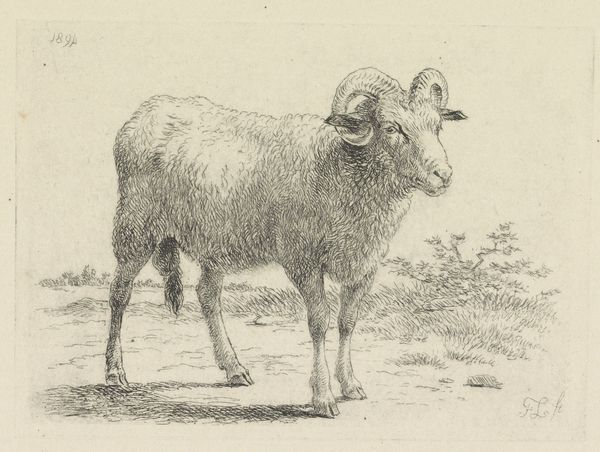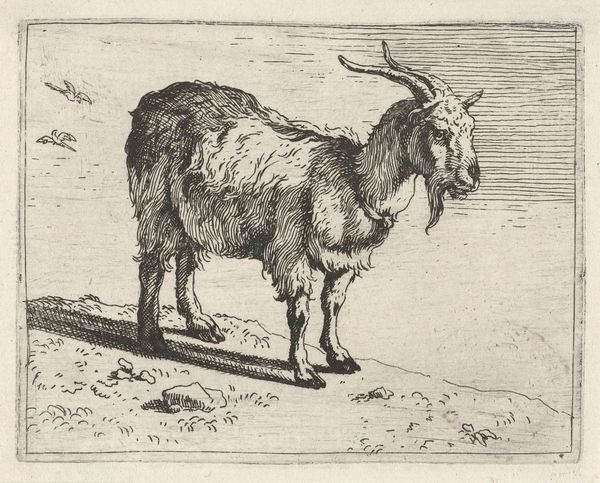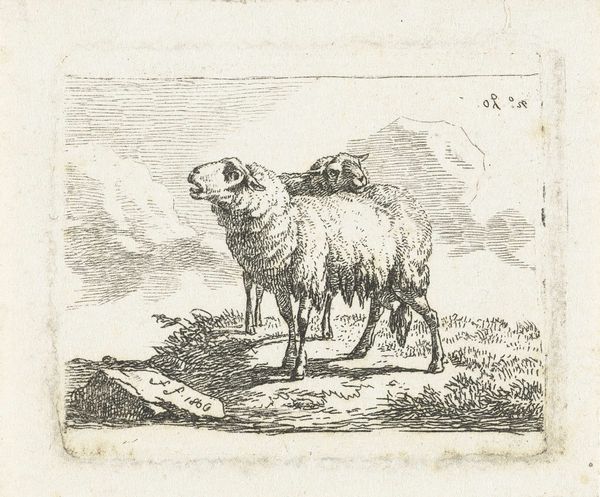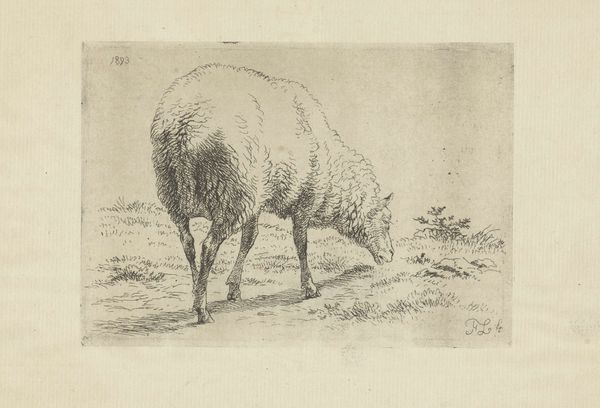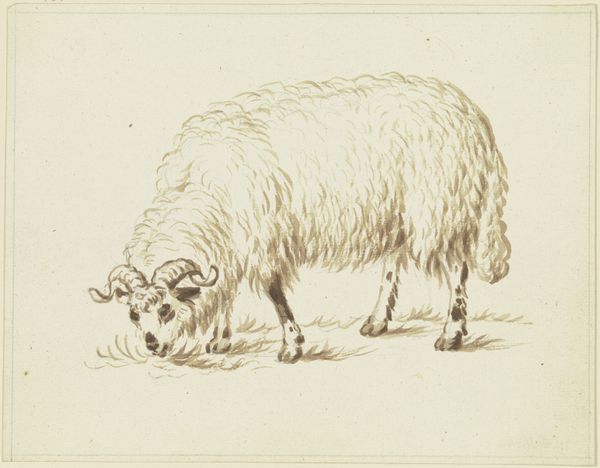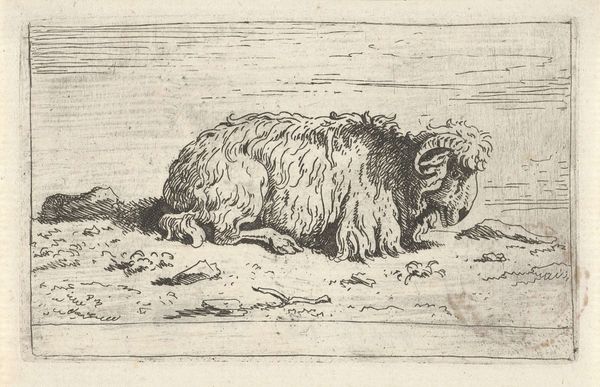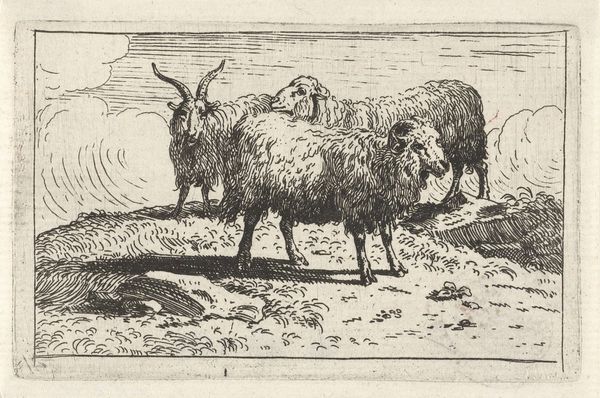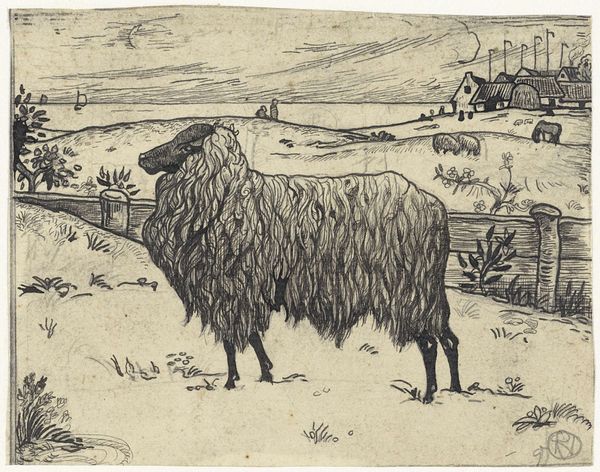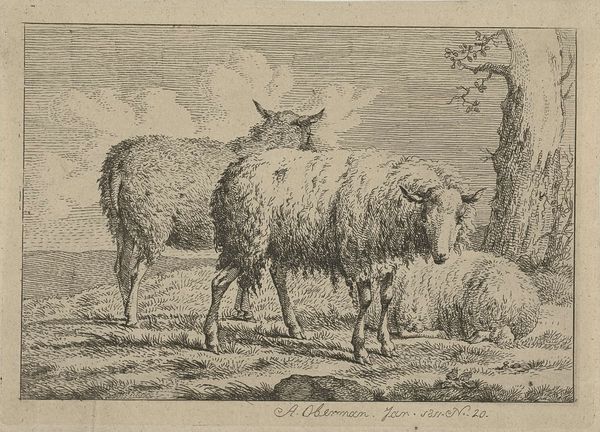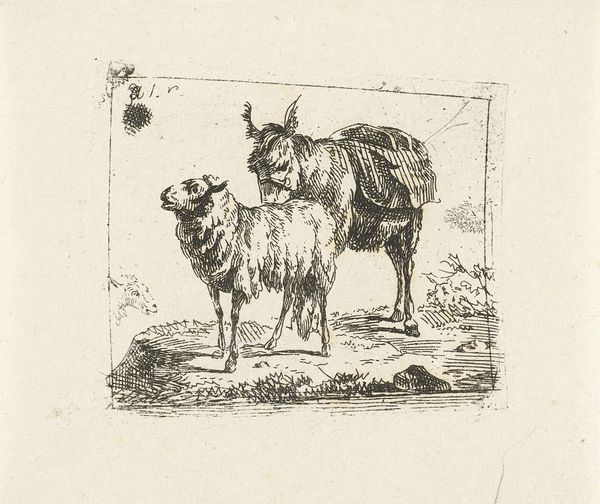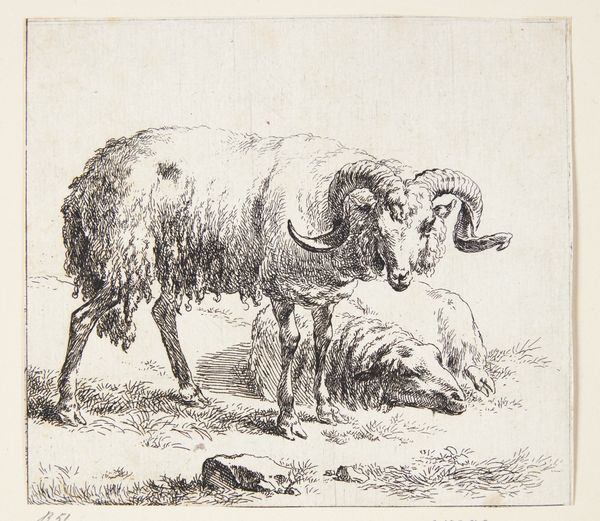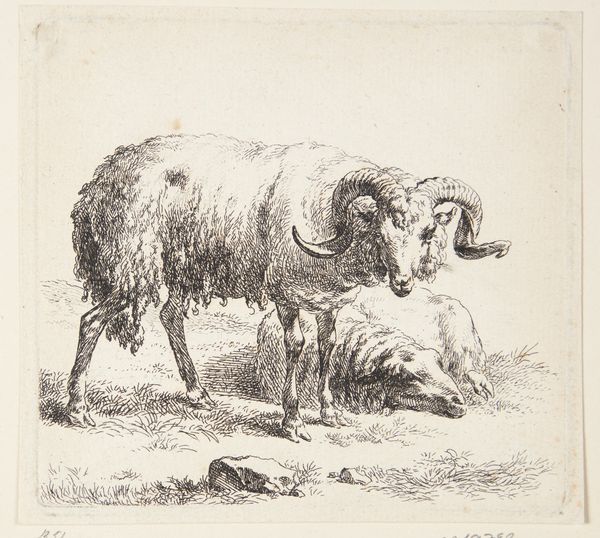
etching
#
dutch-golden-age
#
etching
#
realism
Dimensions: height 84 mm, width 105 mm
Copyright: Rijks Museum: Open Domain
Curator: We're looking at an etching from the Dutch Golden Age. It's called "Ram" and was created sometime between 1655 and 1688 by Govert van der Leeuw. Editor: My first impression is one of intense detail; the textures practically jump off the paper! You can almost feel the thickness of the ram's wool just from the intricate use of lines. Curator: Indeed. Van der Leeuw's work appeared at a time when Dutch art shifted from religious iconography towards secular, everyday subjects. Rural life and animals held particular fascination, reflecting the economic and social importance of agriculture. Prints such as this became accessible commodities in the burgeoning art market. Editor: The composition is so deliberate, leading the eye to trace the animal's form. The play of light and shadow really emphasizes the mass of the body, creating an imposing yet dignified presence. Curator: Considering this, prints like "Ram" helped solidify a national identity linked to pastoral prosperity. Sheep farming in particular was a massive economic driver at the time. So, we see something as seemingly simple as an etching carrying subtle messages of Dutch affluence and social harmony. Editor: Looking at the ram’s posture, there’s also a dynamic contrast between strength and serenity. Notice how the solid body and textured fleece meet more delicately articulated features like the horns and head; its placement on the slightly angled plane gives it more life. Curator: I agree. Prints were displayed not only for decoration but as emblems of societal values. They promoted and upheld particular social narratives that would appeal to various viewers and were accessible. Editor: I can certainly appreciate the socio-economic aspects you point out. However, from an artistic viewpoint, it remains fascinating as a beautiful rendering in itself. Van der Leeuw managed to convey a wealth of information using only lines and shading. Curator: It makes you realize how much even seemingly simple works were integrated with, and were reflections of, contemporary society. Editor: Exactly. Now I look at it not just as a nice etching but as a small piece of that moment in history made manifest.
Comments
No comments
Be the first to comment and join the conversation on the ultimate creative platform.
